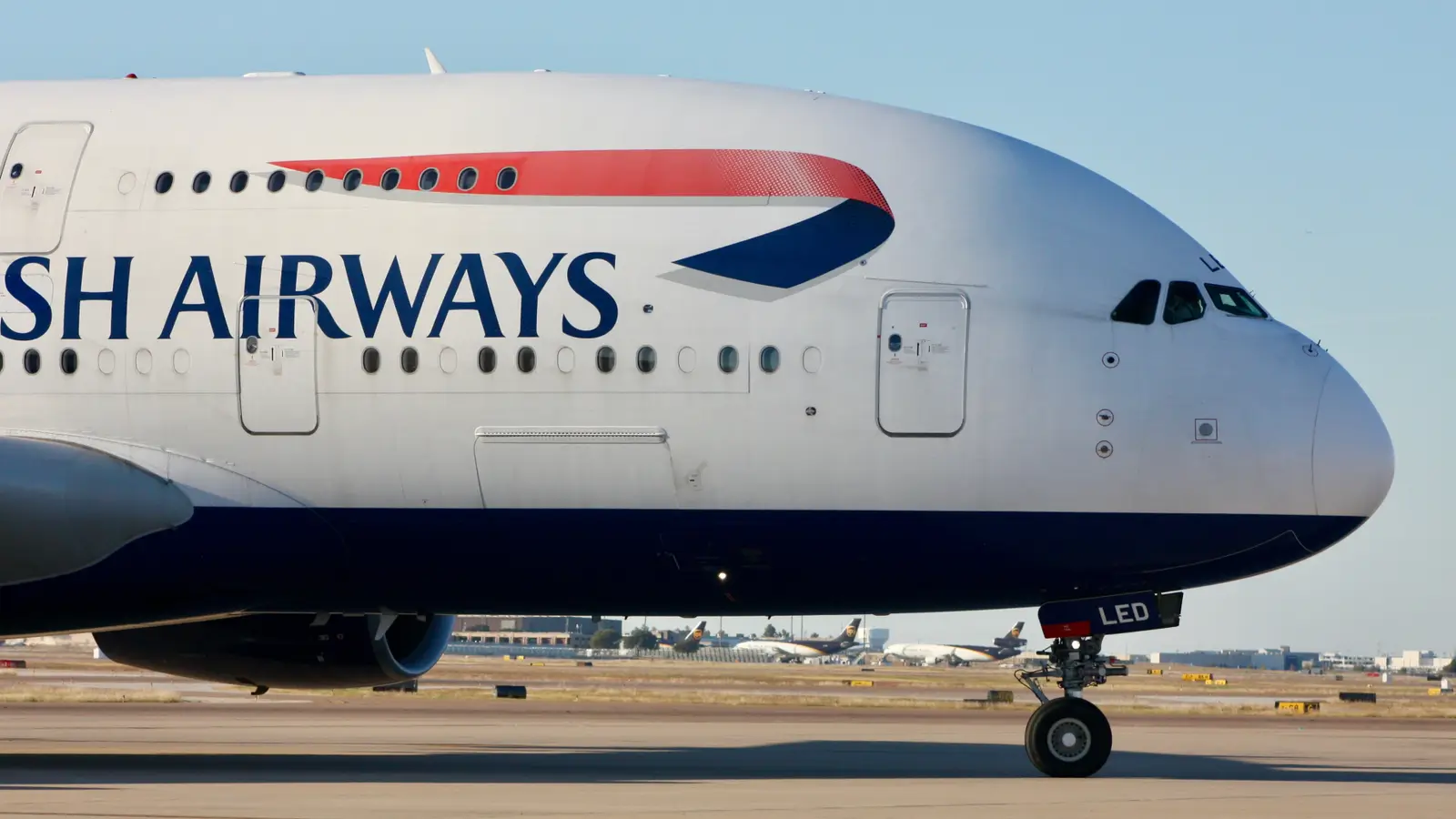
The Airbus A380 and the Boeing 747 are two of the most recognizable aircraft in the skies today, although their numbers are diminishing, and their era of being the most dominant widebody jets in the skies has certainly faded away. The A380 is a four-engine widebody that offers an incredible amount of capacity. Featuring two full-length passenger decks and a pair of staircases connecting them, it is designed to be the highest-capacity passenger aircraft to ever take to the skies.
Meanwhile, the Boeing 747 was the first widebody to ever fly passengers, and it provided exceptional capabilities for operators, as it allowed them to significantly increase capacity and change per-seat operating economics forever. Able to fly more passengers farther than any aircraft before it, the 747 was the long-haul flagship for most airlines throughout the 1970s, 80s, and 90s. Despite the extensive similarities between these two aircraft, there are some things that differentiate them.
Architecture & Design Differences
The Airbus A380 and the Boeing 747 diverge fundamentally in terms of their layout, with the European manufacturer having designed the former with a full-length double-deck configuration, with two continuous passenger decks and a lower cargo hold. The 747, however, has just one continuous deck and a shorter upper deck, which provides the plane with its iconic ‘hump’ design. The 747’s hump allows it to have a hinged nose, which makes it easier for freight to be loaded and unloaded.
The Airbus A380’s massive wingspan and extensive wing area offer fairly reasonable field performance for an aircraft of the A380’s mass, and a supercritical wing upgrades the aircraft to offer better cruise efficiency and reduced overall drag. This is in contrast to the Boeing 747, which has a slightly smaller overall wing area.
The Airbus A380’s six-wheel bogies help distribute weight to meet pavement limitations, while the Boeing 747 uses a four-main-landing-gear layout, which allows the aircraft to be steered easily. Its fuselage is mostly designed of advanced alloys and composite laminates, while the Boeing 747-8 applies carbon fiber to certain elements of the aluminum in the fuselage’s construction, maximizing cabin volume.
The Two Aircraft Have Different Engines
Both of these aircraft are four-engine jets, although the propulsion systems are different. The A380 is powered by either the Rolls-Royce Trent 900 or the Engine Alliance GP7200, both of which are optimized to offer high bypass ratios, low fan pressure ratios, and quieter operations with heavy takeoff weights. The 747 family evolved across multiple different engine eras, with the 747-8 adopting GEnx-2B engines that were originally derived from the powerplant used on the Boeing 787 Dreamliner.
The A380 has a composite fan, features swept blades and an advanced combustor, all of which deliver significant specific fuel consumption improvements over the 747-400. Its larger wing and slower approach speeds, combined with the acoustics of modern noise-reducing nacelles, help result in quieter operations than older twin-engine aircraft. The Boeing 747-8 improved performance and noise footprint significantly over the 747-400.
However, it does trail best-in-class twin-engine aircraft when it comes to noise and fuel burn per seat on thinner missions. The aircraft also differ in engine maintenance strategies, with A380 operators typically managing engines through different manufacturers and fan case logistics systems. The 747-8 also benefits from its engines being derived from those designed for the 787, allowing them to fit cleanly into the maintenance system of the Dreamliner.
Cabin Layout & Passenger Experience
The Airbus A380 features a full double-deck configuration which offers unmatched cabin volume and enables more than 500-600 seats to be filled (depending on the specific configuration). Operators of the aircraft have historically leveraged this space in order to provide passengers with wider aisles, larger galleys, premium bars and lounges, as well as generous seat width, especially with 2-4-2 economy class configurations slowly becoming standard on the upper deck of the aircraft.
The Boeing 747-8, which is smaller, offers an iconic upper-deck lounge that can be used for business-class seating. The aircraft’s main deck also offers a balanced mix of premium economy and economy class seating, with true premium cabins typically pushed towards the front. Operationally speaking, these aircraft differ in terms of boarding and deplaning, with the Airbus A380’s dual-level jetways shortening turn times at gates. However, these gates are much more expensive to use.
The Boeing 747, by contrast, uses single-level boarding, and some airports are capable of providing two jetbridges, which can speed up the boarding process for premium cabin passengers. The pressurization and the acoustics of the two jets also differ slightly. While the Airbus A380 earned a reputation for having a quiet cabin, especially in the forward part of the upper deck, the Boeing 747’s cabin noise levels are somewhat location-dependent, and the upper deck and the nose are uniquely prized.
Lavatory counts, galley footprints, and crew-rest locations are also simpler to scale on the Airbus A380. The Boeing 747 trades volume for unique premium areas, which are exceptionally well-suited for flexible galley placement and catering to the needs of premium travelers.
Range, Payload & Cargo Capabilities
The range and payload capabilities of these two jets also differ significantly. The Boeing 747-8F is arguably the most capable large widebody freighter, offering main-deck freight flexibility and a nose-door and large side door, which enables outsized loads and rapid turnarounds. The Boeing 747’s high floor strength and unobstructed cross-section make it a natural freighter in both factory-built and converted form. The Airbus A380 series, however, never featured a production freighter
Indeed, the proposed Airbus A380F cargo variant was shelved due to shifting weight, schedule, and demand challenges. In terms of passenger roles, the A380 offers excellent per-flight belly cargo volume capabilities, although it does lack the capability of providing main-deck cargo space. The aircraft’s range competitiveness differs by specific seating density, although across the board, the A380 can comfortably complete ultra-long-haul trunk routes that offer high seat counts.
The Boeing 747-8 trades some seats for exceptional range and payload capabilities, and, while the model appeals to premium demand, it does not reach the scale of the Airbus A380. From an operational perspective, the Boeing 747’s divergent civil, military, charter, and freight ecosystems extend the plane’s utility beyond just passenger service. The Airbus A380’s commercial value, by contrast, remains concentrated in high-density passenger markets.
Airport Compatibility & Infrastructure
It is important to note that access to airports is a key differentiator between the two models. The Airbus A380 has a Code F footprint, meaning that it requires several additional accommodations, including dual-level boarding bridges, wider shoulder capacity, and specific gate clearance obligations. Many global hub facilities have been adapted to accommodate the larger model, but most secondary airports have not done so, limiting network flexibility.
Aircraft turnarounds demand more coordinated ground equipment, including two-deck catering capabilities, extra cleaning capabilities, and multiple jetways, all of which help the aircraft keep block times somewhat competitive. The Boeing 747-8, which is large, typically fits Code E infrastructure that supports large twin-engine aircraft like the Boeing 777-300ER and the Airbus A350-1000 with fewer special accommodations.
Some less obvious modifications also need to be made for the aircraft, including more dynamic jet blast envelopes, which are more forgiving for the Boeing 747-8 than the Airbus A380 at most airfields. Maintenance support systems also differ, with A380 line stations concentrated at specific hubs. Lastly, contingency operations are a reason why some airlines favor the 747, as the aircraft can easily divert to most airports without the need for special Code F-compliant gates.
Differing Operating Economics
Airbus has made a bet on mega-hubs with its largest jets, while Boeing eventually elected to pivot towards more efficient twin-engine aircraft for point-to-point operations. The A380 offers cheap per-seat economics but is costly over the course of a full flight, meaning that profits will vanish in the event that load factors decline significantly.
The Boeing 747-8 struggled in the market, but its design and production ensured that Airbus concentrated extra resources into the A380 program. The A380’s orders were clustered around just a few hub carriers, with a near non-existent second-hand market.
The Boeing 747 (including the 747-8 variant) benefited significantly from being a dynamic freighter, in addition to a capable passenger airliner. However, it simply looks like the era of four-engine aircraft could be behind us. At the end of the day, it appears that Airbus’ gamble did not pay off as airlines seemed a lot more interested in efficient twin-engine aircraft. Sure, some operators will undoubtedly defend the aircraft, especially those large trunk carriers for which the jet is exceptionally valuable, but those kinds of carriers are unfortunately few and far between. Lighter jets like the Boeing 787 have proven exceptionally valuable in today’s industry.



